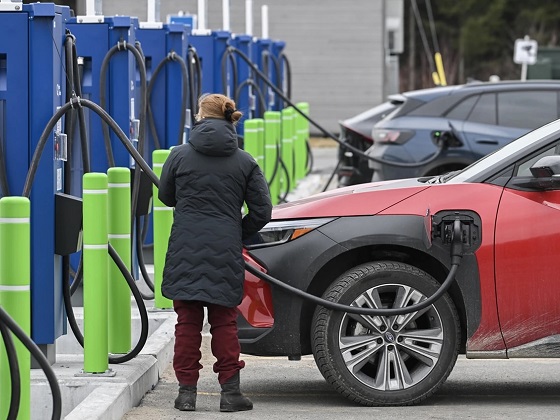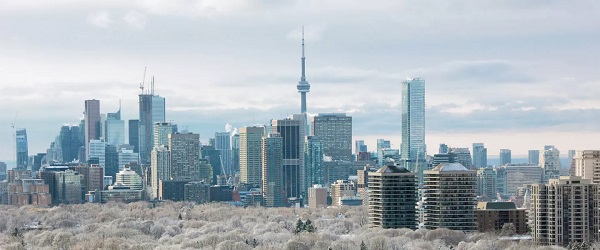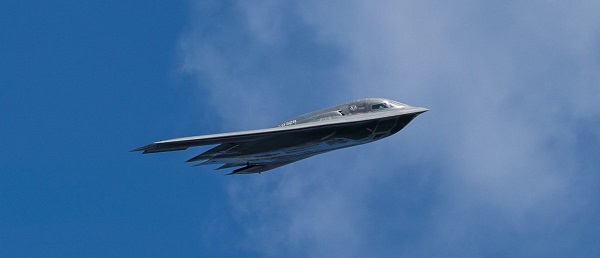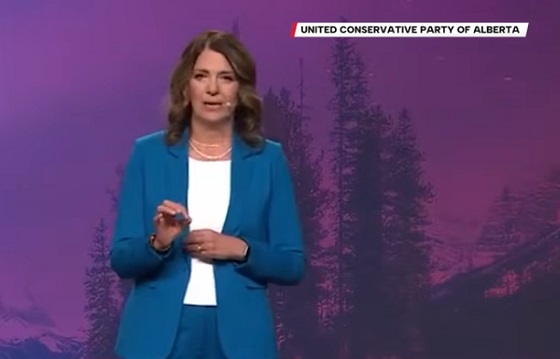Business
Flight attendants’ win proves the right to strike matters

This article supplied by Troy Media.
 By Peggy Nash
By Peggy Nash
Ottawa’s interference in the Air Canada strike delayed a resolution. When it stepped aside, a deal quickly followed
When governments get out of the way, collective bargaining works—and the Air Canada flight attendants proved it by reaching a deal the moment
they were left to negotiate freely.
The strike by 10,000 flight attendants ended on Aug. 19 with a tentative agreement between their union, the Canadian Union of Public Employees (CUPE), and the airline.
That only happened after the Canadian Industrial Relations Board, acting under the federal government, tried to force an end to the strike by ordering the employees back to work. The CIRB can suspend or limit strikes if it believes a labour dispute threatens public safety or the economy. In this case, it attempted to use that power to override the strike—a move workers strongly opposed.
Because Air Canada is federally regulated, labour disputes fall under federal labour law, not provincial. That gives Ottawa broader powers to intervene in disputes, including through back-to-work legislation or binding arbitration.
That legal context helps explain what happened next. The government’s attempted intervention failed. But when it stepped back and let both parties negotiate freely, a deal was reached within hours.
It was a swift and fair outcome—one that likely could have happened earlier if not for the looming threat of government interference.
Employers already hold most of the power. They decide when to invest, where to expand and who to hire or fire. They often benefit from institutional credibility and public sympathy. The only meaningful power workers have is the ability to bargain collectively, and, if necessary, to strike.
The Air Canada flight attendants—more than 70 per cent of whom are women— hadn’t been able to negotiate a proper contract in over a decade. Wages had fallen behind inflation, even as they were expected to live in some of the country’s most expensive cities. Many had less than five years’ seniority and were paid near-poverty wages. They also performed unpaid ground work before and after flights.
Their frustration translated into action. They were fighting for better pay and to be compensated for all the hours they worked. And they were united. Over 90 per cent of union members voted. Of those, 99.7 per cent backed the strike. The public supported them too.
Air Canada, however, appeared to be counting on the government to intervene—expecting Ottawa to force arbitration and deny workers a vote on their own contract.
That undermines the constitutional right to free collective bargaining and feeds growing frustration among workers as corporate profits soar while wages stagnate. Last year, Air Canada’s CEO earned $12 million while some staff struggled to make ends meet.
This kind of imbalance shows why collective bargaining rights matter. The system is meant to balance power—ensuring workers can negotiate fairly while employers continue to operate between contracts. That structure has mostly preserved labour peace in Canada.
But when government overrides that process, it invites disorder. In this case, it led to hundreds of thousands of delays for passengers, lost revenue and reputational damage, only for both sides to agree on terms they might have reached much earlier if the threat of interference hadn’t been on the table.
The outcome sets an important precedent. If major employers expect Ottawa to intervene every time a union takes job action, the right to strike becomes meaningless. And that weakens the bargaining power of workers across the country—not just in aviation.
CUPE flight attendants—and their union—deserve credit for standing up for their rights. In doing so, they rallied support across the labour movement.
The lesson is simple: when governments and corporations overreach, they risk losing control. But when workers stand together and fight for fairness, they can win.
Peggy Nash is the executive director of the Canadian Centre for Policy Alternatives.
Troy Media empowers Canadian community news outlets by providing independent, insightful analysis and commentary. Our mission is to support local media in helping Canadians stay informed and engaged by delivering reliable content that strengthens community connections and deepens understanding across the country.
Automotive
Power Struggle: Governments start quietly backing away from EV mandates

From Resource Works
Barry Penner doesn’t posture – he brings evidence. And lately, the evidence has been catching up fast to what he’s been saying for months.
Penner, chair of the Energy Futures Institute and a former B.C. environment minister and attorney-general, walked me through polling that showed a decisive pattern: declining support for electric-vehicle mandates, rising opposition, and growing intensity among those pushing back.
That was before the political landscape started shifting beneath our feet.
In the weeks since our conversation, the B.C. government has begun retreating from its hardline EV stance, softening requirements and signalling more flexibility. At the same time, Ottawa has opened the door to revising its own rules, acknowledging what the market and motorists have been signalling for some time.
Penner didn’t need insider whispers to see this coming. He had the data.

Barry Penner, Chair of the Energy Futures Institute
B.C.’s mandate remains the most aggressive in North America: 26 per cent ZEV sales by 2026, 90 per cent by 2030, and 100 per cent by 2035. Yet recent sales paint a different picture. Only 13 per cent of new vehicles sold in June were electric. “Which means 87 per cent weren’t,” Penner notes. “People had the option. And 87 per cent chose a non-electric.”
Meanwhile, Quebec has already adjusted its mandate to give partial credit for hybrids. Polling shows 76 per cent of British Columbians want the same. The trouble? “There’s a long waiting list to get one,” Penner says.
Cost, charging access and range remain the top barriers for consumers. And with rebates shrinking or disappearing altogether, the gap between policy ambition and practical reality is now impossible for governments to ignore.
Penner’s advice is simple, and increasingly unavoidable: “Recognition of reality is in order.”
- Now watch Barry Penner’s full video interview with Stewart Muir on Power Struggle here:
Business
New Chevy ad celebrates marriage, raising children

From LifeSiteNews
By Matt Lamb
Chevrolet’s new Christmas ad portrays the ups and downs of family life and the fun of parenting.
Car company Chevrolet launched its Christmas ad campaign with a beautiful commercial that highlights the messiness of raising kids while championing the value of having a family.
The ad, titled “Memory Lane,” shows a middle-aged married couple loading up their decades-old Chevy Suburban with food to head off to a family dinner. At this point, the ad switches between the couple in the present day and grainy, recorder-quality video of family memories.
It begins with a young family, including a baby, loading up into the same car. As the couple begins to drive, the wife and mom is reminiscing. The husband asks her not to “keep all the good stuff” to herself.
From there, the ad reflects on the ups and downs of the family’s life, including memories of mistakenly tying a Christmas tree to the car door and comforting their college-aged daughter about a break-up. As the couple pulls up to a house at the end of their trip, the wife turns to her husband and says: “They never made it easy, did they?”
“Did you want it to be easy?” he replies.
“No, I wanted it to be just like it was,” she says, before they exit the car to meet family, including a grandchild and a new dog that looks like their old dog.
“The greatest journey is the one we take together,” the ad ends.
Commercial accurately portrays that family life isn’t easy, but it is fun
Anyone who has kids knows that it is not always easy raising them, but it is enjoyable. They scream, they cause messes, they wake you up in the middle of the night. And that’s just before they turn five years old. It only gets more enjoyable, and more difficult, as they age (from what I can tell).
Even if you do not have kids, you can probably remember your own life and think about the ways you caused your parents headaches (getting a bad grade in a class or breaking the curfew), but also the ways you brought them joy (graduating from college, joining the military, or getting married).
The truth is that families are messy, and no one is guaranteed an easy life. But the important thing is to persevere by sticking together.
Another thing that stuck out is that both parents remained married throughout their life and are celebrating Christmas with both of their children.
One of the kids did not avoid Christmas because dad voted for Trump or because mom has strongly held religious beliefs – something that does happen to the glee (and detriment) of leftist writers. The entire family, not just those who perfectly agree with each other, were together for the holidays. In fact, this is one way we honor our father and mother, by getting together over the holidays and at other family gatherings.
As a parent myself, I sometimes wish it would be “easy,” but the truth is the ups and downs are what make it enjoyable.
Thank you to Chevy for reminding me, and other parents, of this lesson.
-

 Business19 hours ago
Business19 hours agoRecent price declines don’t solve Toronto’s housing affordability crisis
-

 Daily Caller18 hours ago
Daily Caller18 hours agoTech Mogul Gives $6 Billion To 25 Million Kids To Boost Trump Investment Accounts
-

 National17 hours ago
National17 hours agoCanada Needs an Alternative to Carney’s One Man Show
-

 Alberta2 days ago
Alberta2 days agoNew era of police accountability
-

 National2 days ago
National2 days agoMedia bound to pay the price for selling their freedom to (selectively) offend
-

 C2C Journal2 days ago
C2C Journal2 days agoLearning the Truth about “Children’s Graves” and Residential Schools is More Important than Ever
-

 armed forces2 days ago
armed forces2 days agoGlobal Military Industrial Complex Has Never Had It So Good, New Report Finds
-

 Automotive4 hours ago
Automotive4 hours agoPower Struggle: Governments start quietly backing away from EV mandates





